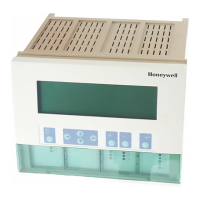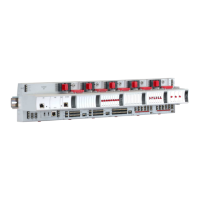Ideally, all the control systems nodes are linked together in a hierarchy of time critical usage.
In most cases, it may be better to set up one or two secondary network time protocol (NTP)
servers that service all the control systems NTP clients on the local network. This provides
mitigation against requirements on the network being available to keep the time consistent and
attain accurate time.
Your organization may already have a time hierarchy in place that can be used as a source
from which you can then branch off for the control system. Regardless of the source of time,
all topologies should include local NTP servers that serve time in the control system.
Workgroup topology with no external source
In the following diagram, redundant Experion servers are set up as redundant NTP servers.
All time clients, such as Flex Stations, Console Stations, and C300 controllers, receive time
from the primary Experion server. If this server fails over, time is served by the backup
Experion server.
This topology uses the internal CMOS clock of the authoritative server as the time source.
This time source is not as accurate and will create deviations in time seen throughout the
hierarchy. Systems with strict requirements on sequence of events should not implement this
topology.
Workgroup topology with external source
In the following diagram, the primary Experion server receives time from an external source.
The redundant Experion servers are set up as NTP servers which serve time to all time clients,
such as Flex Stations, Console Stations, and Safety Manager. If the primary Experion server
fails over, time is served by the backup Experion server. An external source serves time to the
C300 controller.
Time synchronization
Honeywell 2017 41
